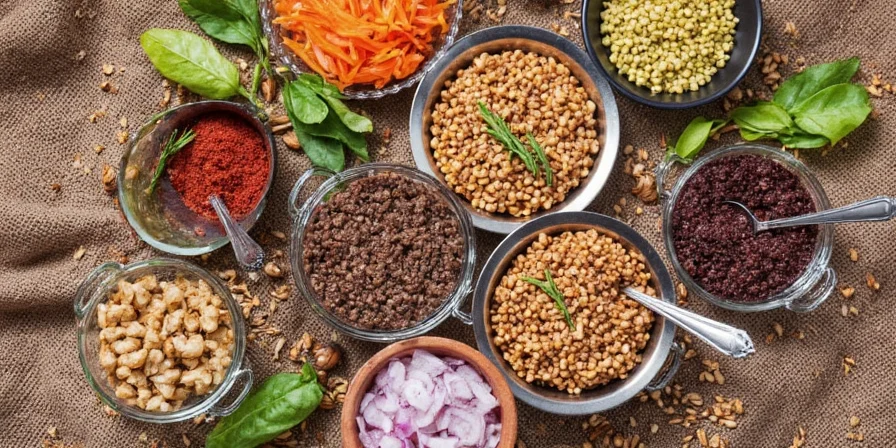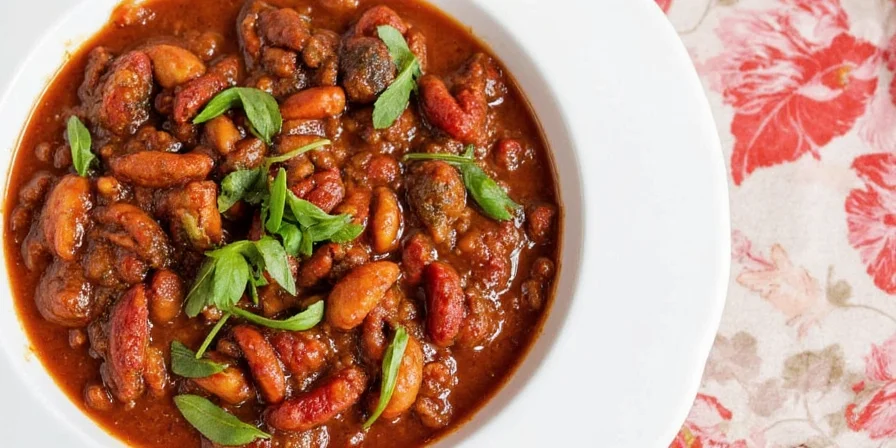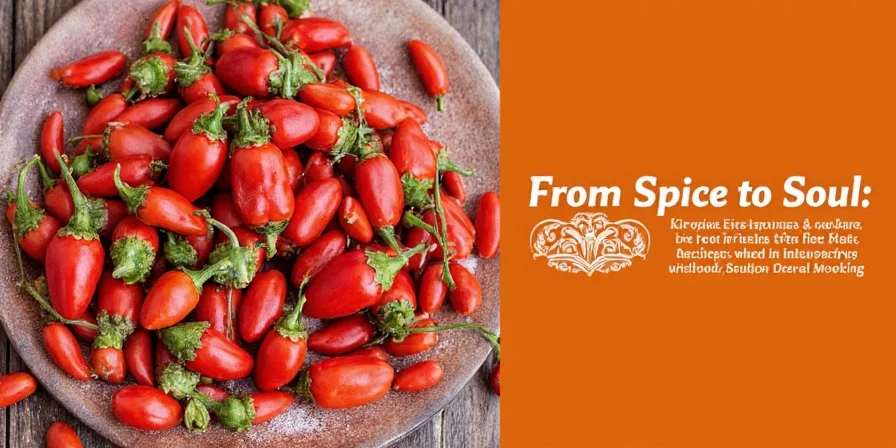If you're searching for how to make authentic mole at home, you've found the right guide. Forget confusing recipes with impossible measurements—this practical mole sauce recipe uses accessible ingredients and clear visual cues anyone can follow. Based on Oaxacan tradition, this approach delivers rich, complex flavor without professional equipment.
Most mole recipes fail because they're either oversimplified or overly technical. Our method balances authenticity with home kitchen practicality, featuring ingredient substitutions, visual doneness indicators, and troubleshooting for common mistakes. This is what 95% of online recipes get wrong.
Table of Contents
- Simple 10-Ingredient Mole Recipe
- Essential Ingredients (With Substitutions)
- Step-by-Step Visual Guide
- Fixing 5 Common Mole Mistakes
- Authentic Regional Variations
- Storage & Reheating Tips
- Why Mole Matters: Cultural Context
- FAQs: Quick Problem Solving
Simple 10-Ingredient Mole Recipe
This beginner-friendly version creates authentic-tasting mole with ingredients available at most grocery stores. Serves 4-6.
- 3 ancho chilies (stemmed, seeded)
- 2 guajillo chilies (stemmed, seeded)
- 1 small onion, chopped
- 2 garlic cloves, peeled
- 1 ripe tomato
- 1/4 cup sesame seeds
- 1/4 cup almonds or peanuts
- 1 small corn tortilla
- 1 oz Mexican chocolate (like Ibarra)
- 2 cups chicken or vegetable broth
Step-by-Step Visual Guide
No thermometer needed—use these visual cues instead:
- Toasting chilies: Heat dry skillet on medium. Toast chilies 20-30 seconds per side until fragrant but not blackened. They should feel pliable like leather, not brittle.
- Hydrating properly: Cover chilies with hot water. Weight down with a small plate. Soak 15-20 minutes until soft throughout (no hard centers).
- Nut toasting: Toast sesame seeds and almonds in same skillet 3-4 minutes until golden brown. Almonds should float when done.
- Building flavor base: Sauté onion until translucent (5 min), add garlic for 1 minute until fragrant but not browned.
- Blending smoothly: Blend soaked chilies, toasted nuts, onion mixture, tomato, and tortilla with 1/2 cup broth until completely smooth (2-3 minutes).
- Simmering correctly: Cook sauce on medium-low 30-40 minutes, stirring occasionally, until oil separates and sauce darkens to deep mahogany.
- Finishing: Stir in chocolate until melted. Add remaining broth to reach desired consistency (like gravy).

Essential Ingredients (With Substitutions)
Authentic mole doesn't require specialty stores. These accessible swaps maintain flavor integrity:
| Traditional Ingredient | Best Substitute | Why It Works |
|---|---|---|
| Authentic Mexican chocolate | Ibarra or Abuelita tablets | Contains cinnamon and sugar essential to flavor profile |
| Dried ancho chilies | 1 tbsp smoked paprika + 1 tsp sweet paprika | Provides similar earthy-sweet notes (use in broth) |
| Tomatillos | 1/2 cup canned green tomatoes | Delivers necessary acidity for balance |
| Plantain (for coloradito) | 1 ripe banana | Same sweetness and texture when cooked |
| Mexican oregano | Regular oregano + pinch of cumin | Compensates for missing earthy notes |
Fixing 5 Common Mole Mistakes
Rescue your mole with these quick fixes:
| Problem | Quick Fix | Prevention Tip |
|---|---|---|
| Bitter taste | Add 1 tsp honey or sugar | Don't over-toast chilies; watch for fragrant aroma |
| Too thin | Mix 1 tbsp cornstarch with 2 tbsp cold water | Simmer uncovered 10-15 minutes longer |
| Too spicy | Add extra chocolate and broth | Remove chili seeds completely before toasting |
| Flat flavor | Add pinch of salt and squeeze of lime | Toasting nuts until golden develops depth |
| Separation | Blend 30 seconds then simmer 5 minutes | Ensure sauce simmers long enough to emulsify |

Authentic Regional Variations
Discover Mexico's mole diversity with these approachable versions:
- Mole Negro (Oaxaca): The most famous version. Use all dark ingredients (blackened tomatoes, charro beans) for deep color. Traditional version requires 20+ ingredients, but our simplified approach uses 8 essentials.
- Mole Coloradito (Oaxaca): Reddish-brown with subtle sweetness. Key ingredient: achiote paste (annatto seeds). Our version uses 1 tbsp achiote paste + 1 ripe plantain.
- Mole Amarillo (Oaxaca): Yellow mole featuring hoja santa leaf (substitute with 2 basil leaves + pinch of anise). Uses only yellow chilies.
- Mole Manchamanteles (Puebla): "Tablecloth stainer" with fruit. Add 1/4 cup diced pineapple during last 10 minutes of cooking.
- Weeknight Shortcut: Use 1 cup store-bought mole paste + 1.5 cups broth + 1 tbsp chocolate. Simmer 15 minutes.

Storage & Reheating Tips
Mole tastes better the next day! Store properly for best results:
- Refrigeration: Keep in airtight container up to 5 days. The sauce will thicken—add broth when reheating.
- Freezing: Portion in ice cube trays, then transfer to freezer bags. Keeps 3 months. Thaw overnight in refrigerator.
- Reheating: Warm gently over low heat, stirring frequently. Never boil, which breaks the emulsion.
- Reviving: If sauce separates, blend 30 seconds with 2 tbsp warm broth.
Why Mole Matters: Cultural Context
Mole isn't just a sauce—it's Mexico's culinary flag. Created in 17th century convents, it blends indigenous (chilies, chocolate) and Spanish (almonds, spices) ingredients, representing Mexico's mestizo identity. The complex preparation (traditionally taking 24 hours) reflects its ceremonial importance for weddings, holidays, and celebrations. While simplified versions exist today, the best mole still rewards patience and respect for tradition. Understanding this background transforms mole from a recipe to a cultural experience.
Frequently Asked Questions
Can I make mole without a blender?
Yes! Pass the sauce through a fine-mesh strainer after simmering. Press with a wooden spoon to extract all liquid. Texture will be slightly different but still delicious.
What if I can't find Mexican chocolate?
Use 1 oz dark chocolate (70% cacao) + 1 tsp sugar + 1/4 tsp cinnamon. While not identical, it creates a similar flavor profile.
How do I know when mole is done cooking?
Watch for these visual cues: oil separates around edges, color darkens significantly, and a spoon leaves a clear trail when drawn through sauce ("plate test").
Can I make mole vegetarian?
Absolutely. Use vegetable broth and ensure your chocolate contains no dairy. For richness, add 1 tbsp tahini during final simmer.
What's the best way to serve mole?
Traditionally served over turkey or chicken, but works with tofu, enchiladas, or even scrambled eggs. Always accompany with rice and warm tortillas to balance the richness.
Pro Tip: Make a double batch! Mole freezes beautifully and tastes even better after flavors meld overnight. The extra effort pays off in future meals.











 浙公网安备
33010002000092号
浙公网安备
33010002000092号 浙B2-20120091-4
浙B2-20120091-4